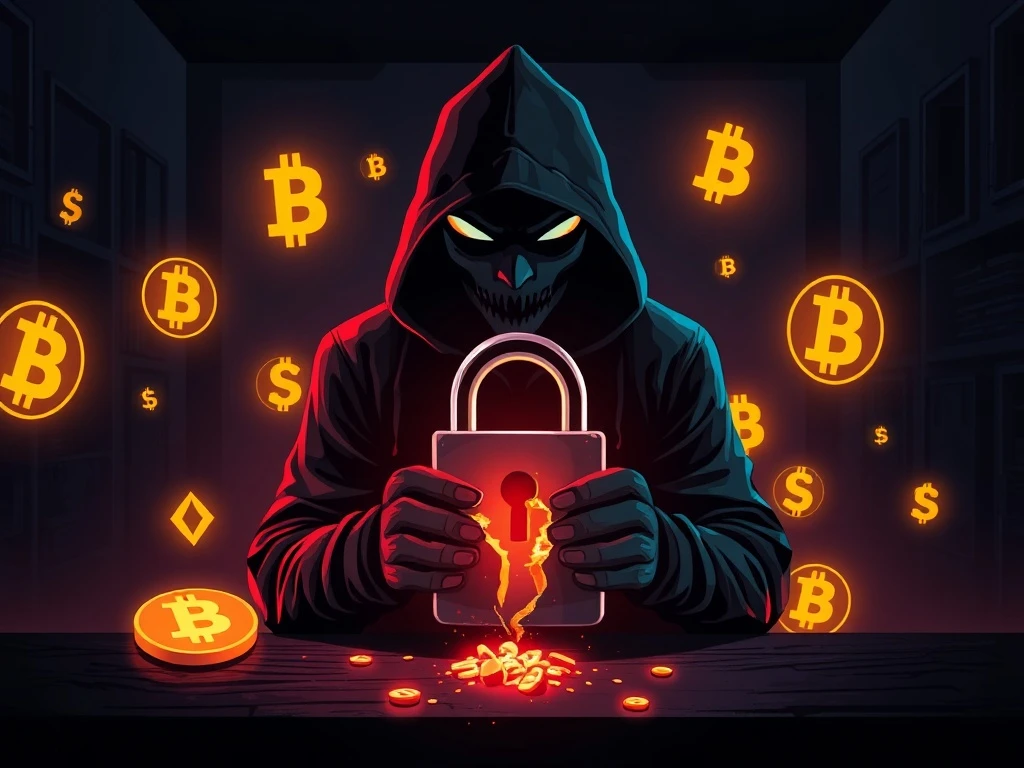Urgent Warning: Crypto Thefts Soar to $163M in August Amid Evolving Hacker Strategy

The cryptocurrency world faced a stark reality in August. Crypto thefts reached a staggering $163 million. This alarming figure highlights a critical shift in hacker strategy. Bad actors are now targeting high-value assets with sophisticated methods. This trend demands immediate attention from everyone in the digital asset space.
Unpacking the Alarming Rise in Crypto Thefts
August saw a significant surge in stolen digital assets. Over $163 million vanished from the crypto ecosystem. These losses occurred across 16 distinct attacks. Furthermore, this represents a 15% increase from July’s $142 million. However, it marks a 47% decrease year-on-year, according to blockchain security firm PeckShield. Cybersecurity experts note that the August rise stems from two key factors. Hackers are shifting to high-value targets. Also, rising crypto prices make these targets more attractive.
One incident alone accounted for a large portion of the losses. A Bitcoiner fell victim to a sophisticated social engineering attack. This single event led to the loss of 783 Bitcoin (BTC). At the time, this amount was worth $91 million. Clearly, the evolving tactics pose a serious threat to individual investors and large entities alike.
The Perilous Shift: Hackers Target High-Value Crypto Assets
PeckShield reported a strategic change in hacker behavior last month. Attackers are now concentrating on centralized exchanges. They also focus on other high-value individual targets. This shift signals a more calculated approach. Therefore, it requires enhanced vigilance across the board.
Two major incidents illustrate this new focus:
- Social Engineering Attack: A Bitcoiner lost 783 BTC ($91 million). Bad actors masqueraded as crypto exchange and hardware wallet support. This deception led to the massive single transaction loss.
- Exchange Breach: Turkish crypto exchange Btcturk suffered a nearly $50 million theft. An attacker accessed its hot wallets. This incident marked the second major security breach for the exchange within a year.
Despite the increased monetary losses, the number of hacks is trending downward. PeckShield recorded 16 incidents in August. This compares to 17 in July and 20 in June. “Looking at the broader picture over the past 8 months, the total number of hacks has shown a decreasing trend,” PeckShield stated. “This is positive news and suggests improvements in overall ecosystem security.” However, the value of each successful attack is growing substantially.
Understanding Social Engineering Attacks and Their Impact
Social engineering attacks exploit human psychology. They trick individuals into revealing sensitive information. Hackers often impersonate trusted entities. For instance, they might pose as customer support or official representatives. They create a sense of urgency or fear. Victims then unwittingly provide access to their funds. This method proves highly effective against even experienced crypto users. Therefore, understanding these tactics is crucial for bolstering personal blockchain security.
These attacks bypass traditional technical safeguards. They target the weakest link: human trust. Consequently, education and skepticism become powerful defenses. Always verify identities independently. Never share private keys or seed phrases. These simple rules can prevent devastating losses.
Rising Crypto Prices Fueling Exploits and Risk
Hank Huang, CEO of Kronos Research, offered further insights. He told Crypto News Insights that crypto exploits often rise alongside crypto prices. Higher prices create more lucrative rewards for hackers. This incentivizes them to intensify their efforts. Both Bitcoin and Ether (ETH) experienced new all-time highs in August. Bitcoin surpassed $124,000 on August 14. Ether climbed past $4,946 on August 24. These peaks presented irresistible targets for cybercriminals.
Huang emphasized the attackers’ focus. “August’s surge highlights how attackers are zeroing in on centralized wallets,” he added. They use sophisticated phishing and social engineering. This exposes operational weaknesses. Total losses were trending downward earlier in the year. June saw $176 million lost, a 54.2% decrease from May’s $385 million. July recorded $142 million. However, Huang speculates that losses could continue rising. This is due to soaring crypto prices and the slow pace of security technology improvements.
Bolstering Blockchain Security: Future Solutions and Vigilance
The continuous threat underscores the need for robust blockchain security. Fortunately, new technologies are on the horizon. Huang believes these advancements will help curb future losses. “As emerging technology advances, AI-driven improvements and stronger security models should help cushion the impact in the future,” he projected. These innovations could provide more dynamic and adaptive defenses against evolving threats.
Meanwhile, PeckShield offers crucial advice for current conditions. High-value targets must implement strong security measures. This includes both corporations and individuals with substantial crypto holdings. They must be increasingly vigilant. Proactive security practices are paramount. This involves multi-factor authentication, cold storage solutions, and regular security audits. Users should also stay informed about the latest scam techniques. This proactive stance is the best defense against sophisticated hacker strategy.
Practical Steps to Enhance Your Crypto Security
Protecting your digital assets requires continuous effort. Consider these vital steps to enhance your blockchain security:
- Enable Multi-Factor Authentication (MFA): Always use MFA on all crypto accounts and exchanges. Hardware-based MFA is preferable.
- Use Cold Storage: For significant holdings, move assets to hardware wallets or other cold storage solutions. These are less vulnerable to online attacks.
- Be Wary of Phishing: Always double-check URLs and email senders. Never click suspicious links.
- Educate Yourself on Social Engineering: Understand common tactics like impersonation and urgency. Never share private keys or seed phrases.
- Regularly Update Software: Keep all operating systems, antivirus software, and crypto wallet applications updated.
- Strong, Unique Passwords: Use complex, unique passwords for every account. Consider a reputable password manager.
- Verify Information: Independently verify any requests for personal or financial information. Do not rely on links provided in messages.
The landscape of crypto thefts is constantly changing. Therefore, continuous learning and adaptation are essential. By adopting these robust security measures, individuals and organizations can significantly reduce their risk. This proactive approach is key to navigating the complex world of digital assets safely. Vigilance remains the strongest shield against financial loss.







